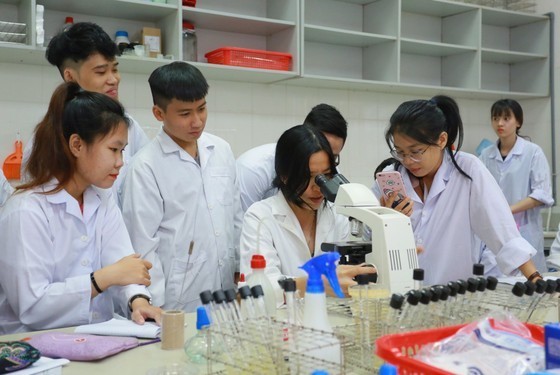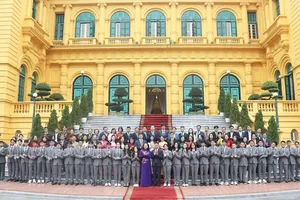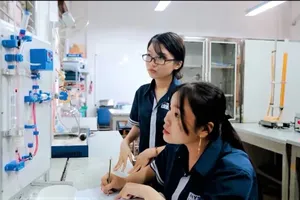 |
High tuition fees bring worries for learners and their parents. |
Tuition fees are one factor that significantly influences the dual goals of higher education: ensuring quality and expanding access. Without increasing tuition fees, there may not be enough resources to ensure quality; however, rising tuition fees increase the barriers for potential students from low-income households.
Hundreds of thousands of freshmen across the country who have been successful in making the cut into a university of their choice are going to schools to complete admission procedures. However, tuition fees at some major universities in HCMC increased sharply from a few tens of millions of dong to hundreds of millions of Vietnamese dong, causing many parents and students to worry.
Though some students from poverty-stricken households were supported to reduce 50 percent of their tuition fees, they still could not afford to pay tuition fees, so they had to stop attending medical school to wait for additional admission.
Higher education facilities can be divided into 3 groups including non-autonomous public universities, self-financing universities, and non-public universities (also known as private universities).
Tuition fees of non-autonomous public universities are collected according to the government’s Decree 81/2021/ND-CP issued on August 27, 2021 on the mechanism of collection and management of tuition fees for educational institutions under the national education system and policies on tuition fee exemption and reduction and support for study expenses; service prices in the field of education and training. The Decree took effect on October 15, 2021.
However, in the face of the difficult economic situation and the impact of the Covid-19 epidemic, in the past two years, the Government has directed not to increase tuition fees as prescribed in the Decree 81. Thus, these schools’ tuition fees fluctuate from VND12 million (US$494) to VND24.5 million a year meanwhile, if schools collect the tuition fee according to the Decree 86, tuition fees will range from VND9.8 million to VND14.3 million a year.
Tuition fees of autonomous public universities according to the Decree 81 are 2-2.5 times higher than those of non-autonomous institutions. This means that the tuition fee of an independent school’s medicine major ranges from VND49 million-VND61.25 million a year. Many schools now have quite high tuition fees. For instance, Medicine of the University of Medicine and Pharmacy in Ho Chi Minh City has a tuition fee of VND74.8 million a year; tuition fees for high-quality programs at Ho Chi Minh University of Law are VND62.5 million - VND165 million a year.
Worse, some schools running courses that meet international accreditation standards are free to determine the tuition fees. Private universities’ medicine majors are even higher. For example, Tan Tao University earns an average of VND150 million a year while the Odonto-Stomatology major of Van Lang University and Hong Bang International University have tuition fees of about VND200 million and VND180 million a year, respectively.
Thus, students of medicine majors have to pay tuition fees of about VND1 billion at a private university while their peers in public autonomous schools also spend about VND500 million. However, many schools think that the above tuition fee is satisfactory compared to the tuition fee of several tens of thousands of US dollars a year in foreign countries but they forgot to compare training quality. Many private universities even lack lecturers, facilities, machines and equipment for practice.
According to the latest report from the World Bank, the student credit policy in Vietnam is not attractive. The majority of students’ tuition fees are covered by their parents without long-term support from the State.
Higher prices for a university degree should not be seen as any guarantee that students are getting better quality education. Therefore, the government should increase the budget for education in general and higher education in particular to reduce the anxiety and burden of tuition fees for learners and their parents in addition to a good credit policy for learners.
Furthermore, to reduce the gap in university access between rural and urban areas, it is necessary to adjust the credit policy by increasing the number of loans to poor students without interest after they graduate. Moreover, all university learners can access the credit policy.
























